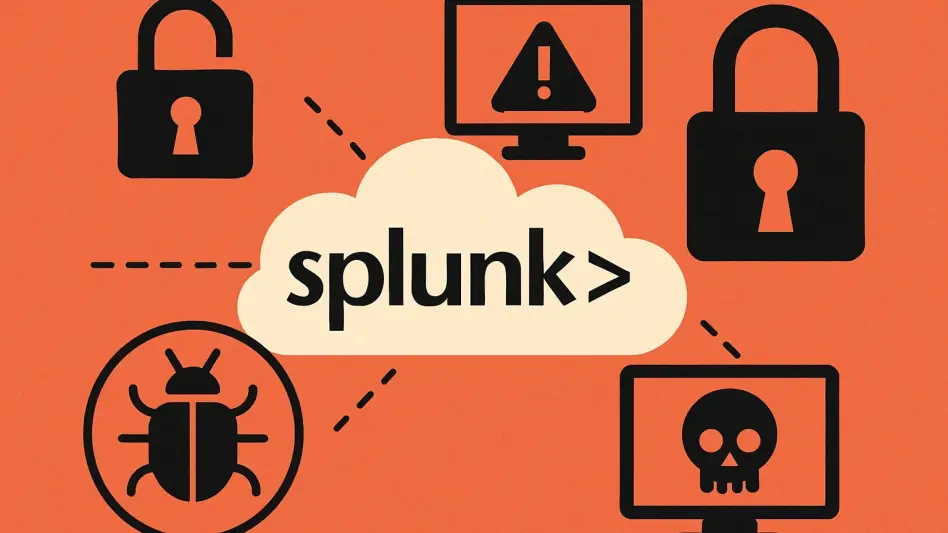In an alarming development for organizations relying on data analytics and monitoring solutions, a series of significant security vulnerabilities have been uncovered in widely used platforms, exposing potential risks to system integrity and sensitive information. These flaws, affecting both enterprise and cloud-based environments, range from exploiting web interfaces to enabling unauthorized access by attackers with minimal privileges. The disclosure raises urgent concerns for businesses that depend on such tools for operational insights, as unaddressed issues could lead to data breaches or service disruptions. With cyber threats evolving at an unprecedented pace, this situation serves as a stark reminder of the importance of timely updates and robust security measures. The following sections delve into the specifics of these vulnerabilities, their potential impact, and the steps organizations must take to mitigate risks effectively.
Understanding the Security Flaws
Nature and Scope of Identified Issues
A detailed examination of the disclosed vulnerabilities reveals a troubling pattern of security gaps primarily centered around web-based interfaces and access control mechanisms. Six distinct flaws have been identified, with severity ratings on the CVSS scale spanning from 4.6 to 7.5, indicating a broad spectrum of potential harm. These issues include cross-site scripting (XSS) vulnerabilities, improper access controls, XML External Entity (XXE) injection, Denial of Service (DoS) through LDAP binds, and a particularly severe unauthenticated server-side request forgery (SSRF) attack. The common thread among these vulnerabilities is the exploitation of insufficient input validation and privilege management, often allowing low-privileged users or external attackers to compromise systems. This situation underscores a critical need for organizations to reassess how user interactions are handled within such platforms, especially in environments where web components play a central role in functionality.
Specific Threats and Their Mechanisms
Focusing on the specific threats, the XSS vulnerabilities enable malicious actors with limited access to execute harmful JavaScript code within unsuspecting users’ browsers, often through targeted endpoints or manipulated error messages in search functionalities. Another concerning flaw involves improper access controls, which permit unauthorized retrieval of sensitive search results by exploiting unique identifiers tied to administrative tasks. Meanwhile, the SSRF vulnerability stands out as particularly dangerous, allowing unauthenticated attackers to make API calls on behalf of high-privileged users under certain conditions, potentially leading to significant system compromise. Additional risks like XXE injection and DoS attacks via excessive LDAP requests further compound the threat landscape, disrupting services and exposing data. Each of these mechanisms highlights distinct yet interconnected weaknesses that demand a comprehensive approach to security hardening.
Mitigation and Protective Measures
Affected Systems and Urgency of Updates
Turning attention to the systems impacted by these vulnerabilities, a wide range of versions across enterprise and cloud platforms are at risk, specifically those below the latest patched releases. Enterprise editions prior to versions 10.0.1, 9.4.4, 9.3.6, and 9.2.8 are susceptible, with certain builds of cloud platforms also affected. Notably, while some newer versions escape specific flaws like XSS, they remain vulnerable to critical issues such as SSRF and LDAP-based DoS attacks. The primary attack vector lies in web components, extending to API interactions in severe cases, which amplifies the urgency for organizations to update their systems promptly. Automatic patching for cloud instances offers some relief, but on-premises deployments require immediate manual intervention. Delaying updates could expose systems to exploitation, making it imperative for security teams to prioritize deployment of the latest versions to safeguard their environments.
Practical Steps for Risk Reduction
Beyond the critical need for updates, several actionable strategies can help mitigate risks for environments where immediate patching isn’t feasible. Disabling certain web functionalities, while potentially disruptive to operations, serves as a temporary shield against most vulnerabilities, particularly those exploiting browser-based interactions. Specific configuration adjustments, such as altering settings in key files to restrict network calls, can address severe flaws like SSRF. Additionally, limiting certain user capabilities, especially those related to authentication changes, reduces the likelihood of service disruptions through DoS attacks. Security teams should also focus on monitoring unusual access patterns to search functionalities and implement network segmentation to limit the impact of potential breaches. Regular reviews of user privileges and system configurations further strengthen defenses, ensuring that vulnerabilities are not only patched but also prevented from recurring through proactive oversight.
Long-Term Security Strategies
Looking at broader protective measures, a layered security approach emerges as essential for managing complex platforms handling diverse user roles. The recurrence of issues like XSS and access control flaws points to an industry-wide challenge in validating inputs and encoding outputs in web applications, necessitating ongoing training for developers and administrators. Adopting strict privilege escalation controls and enhancing API security protocols can curb unauthorized interactions that lead to severe breaches. Organizations are encouraged to integrate continuous monitoring tools to detect anomalies in real-time, alongside periodic security assessments to identify misconfigurations before they are exploited. By combining timely updates with these strategic practices, businesses can build resilience against evolving threats, ensuring that data integrity and system availability remain uncompromised in the face of sophisticated cyber risks.
Final Thoughts on Safeguarding Systems
Reflecting on Past Responses
Reflecting on how these vulnerabilities were addressed, the prompt disclosure and provision of patches by the platform provider marked a critical step in curbing potential damage. Organizations that acted swiftly to apply updates or implement recommended workarounds likely minimized their exposure to threats ranging from data breaches to operational downtime. The varied nature of the flaws, spanning web exploits to API misuse, highlighted the importance of a multifaceted response that tackled each issue with tailored solutions. Security teams who monitored for unusual activity and adjusted user permissions during this period demonstrated the value of vigilance in maintaining system stability. This response set a precedent for how businesses navigated the balance between maintaining functionality and enforcing stringent security protocols under pressure.
Building a Secure Future
Moving forward, the focus shifts to actionable strategies that prevent the recurrence of such widespread vulnerabilities. Implementing automated update mechanisms ensures that systems stay current without manual delays, while fostering a culture of security awareness among staff reduces human error as an entry point for attacks. Investing in advanced threat detection tools becomes a priority, as does collaborating with industry peers to share insights on emerging risks. By integrating these practices, organizations fortify their defenses, turning past challenges into a foundation for robust cybersecurity frameworks that protect critical data and infrastructure against future threats.








